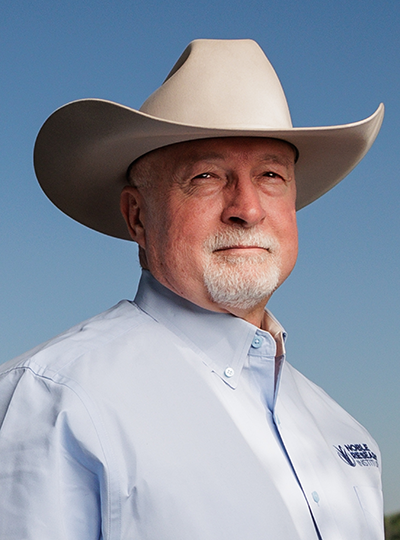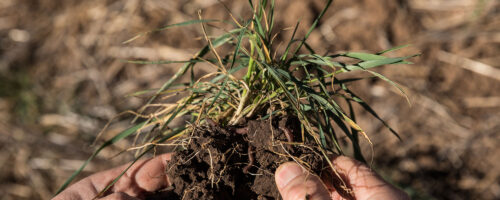What Is High Stock Density Grazing?
High stock density grazing has intentional impacts on the soils, forages and ultimately livestock production.
The article “Potential Mob Graziers Should Consider Precautions”, focuses on ultra-high stock density (UHSD) grazing, which is the management tool of using grazing livestock in much higher than normal concentrations to achieve landscape-focused objectives with the long-term goal of enhancing soils, forages and livestock production. It is usually expressed in pounds of live-weight per acre at a given moment in time. Depending on the environment and forages, ultra-high stock densities are usually in excess of 100,000 pounds of animal live-weight per acre with some producers exceeding 1 million pounds per acre; thus requiring multiple moves to fresh pasture daily.
High stock density (HSD) grazing is very similar and is inclusive of UHSD grazing by definition. However, HSD grazing doesn’t have to be applied at the extremely high intensities often considered to be “mob” grazing whereby multiple moves per day are required.
High stock density grazing begins when cattle are combined into a single herd and moved through multiple pastures within a management area whereby pastures are grazed and rested (allowed to recover) in a managed approach.
HSD has intentional impacts on the soils, forages and ultimately livestock production. It implies there is active management occurring with the grazing livestock.
Rotational Grazing
In a simple grazing rotation, stock density increases while stocking rate remains the same.
If you have 500 acres and 50 cows, the stocking rate is 50 cows, or one cow per 10 acres. Stocking rate is usually expressed in terms of total number of mature head, or head per acre (or acres per head). If the 500-acre property is divided into 10 pastures of equal size (50 acres each) the stock density of cattle in each pasture is one cow per one acre (or 1,200 pounds per acre, assuming average cow weight is 1,200 pounds). The stocking rate remains 50 cows per 500 acres.
If the property was managed such that each of the 50-acre pastures were subdivided into 10-acre paddocks for grazing, stock density in each paddock would be five cows per acre (50 cows divided by 10-acre paddock), or 6,000 pounds per acre (1,200 pounds per cow multiplied by five cows).
As one can imagine, the grazing duration for the cow herd becomes shorter as the pasture or paddock size becomes smaller. Cattle have to be moved (rotated) to a fresh paddock more often, depending on the amount of grazing forage that is available and the amount of forage residual desired to remain after the grazing event.
This is where the concept of planned, managed grazing and the purpose of HSD grazing applies.
Why Use High Stock Density Grazing?
The purpose of HSD grazing is multifaceted. With HSD, a producer can intentionally:
Manage the grazing intensity — which can be from light defoliation to severe, depending on the desired objective — of a paddock or pasture.
Decrease diet selectivity by forcing the consumption of plants that are less palatable or less preferred.
Influence more uniform grazing utilization of pastures by strategic fencing, forcing utilization of areas that are avoided or grazed disproportionate to production.
At higher stock densities, trample structural components to provide additional organic material to the soil surface or to disturb exposed soil surfaces, stimulating new plant recruitment and production, or vice versa.
Most of the HSD grazing applications are deployed to enhance soil health and improve pasture condition. When applied during the course of many years in a well-planned and managed approach, total forage production can be enhanced. This subsequently increases the carrying capacity of the property and, potentially, the stocking rate.
Is There an Optimum Stock Density?
No, stock density is dependent on the objective to be achieved, the situation and resources.
Much is learned by trial and error. Variables such as season of application, management issue being addressed, long-term objective, type of soils and forages, terrain, herd size and weight, etc., also impact the application of stock density. The most effective application is where one uses a temporary electric fence intentionally constructed as required to address each unique situation and achieve the desired outcomes.
The higher the stock density, the more flexible the producer must be with his or her management and usually the gentler the cattle need to be.
HSD Grazing Guidelines
General guidelines as to the expected observed results of the properly managed application of HSD grazing at increasing stock densities as it relates to the variables of selective grazing, grazing distribution and animal impact.

Consider Recovery Period
A key aspect that can be easily overlooked is the optimal recovery period following HSD grazing. If the herd impact on a site is intentionally aggressive (as in it creates lots of disturbance), the recovery period may need to be the remaining growing season or longer.
If the paddocks are lightly grazed or “top grazed” in rapid succession during a rapid growth phase, recovery will occur quickly. Recovery is dependent on the severity of disturbance and the intensity of grazing. The greater the degree of impact, the longer the recovery period required.
Guidelines for What to Expect
High stock density grazing is more than rotational grazing. It is grazing with intention and purpose. It is the intentional application of grazing livestock in higher than normal concentrations to achieve landscape-focused objectives.
The greater the stock density, the greater the impact upon a resource. If done well, it can be very positive. If done poorly, it can be very damaging.
Before increasing stock density above what is achieved from implementing a well-managed grazing program, ask yourself what you wish to achieve. Then, determine through trial what stock densities is best for your intended objective. With experience, the tool of stock density becomes much easier to apply.
Rotational vs. High Stock
Often producers have called this rotational grazing and that is where HSD grazing begins. The difference is the terminology. HSD grazing has a different connotation than rotational grazing:
- Rotational grazing is the process of moving livestock through pastures to graze the forage.
- High stock density grazing is the intentional application of grazing livestock in higher than normal concentrations to achieve landscape-focused objectives.



Comment